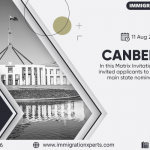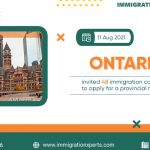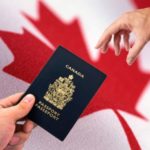Australia is one of the top destinations for immigrants worldwide, thanks to its stable economy, high quality of life, and inclusive multicultural society. Among the many immigration streams, the Spouse Visa Australia—also known as the Partner Visa (subclass 820/801 and subclass 309/100)—is a popular pathway that allows the spouse or de facto partner of an Australian citizen, permanent resident, or eligible New Zealand citizen to live in Australia.
However, this visa class has specific eligibility conditions and documentation requirements. Whether you’re applying from inside or outside Australia, understanding these key requirements is essential to increase your chances of a successful application.
Types of Spouse (Partner) Visas in Australia
Australia offers two main partner visa pathways based on your location at the time of application:
- Subclass 820/801: For applicants applying onshore (within Australia).
- Subclass 309/100: For applicants applying offshore (outside Australia).
Each of these visas is processed in two stages:
- Temporary Partner Visa (Subclass 820 or 309) – allows you to stay temporarily in Australia.
- Permanent Partner Visa (Subclass 801 or 100) – granted approximately two years later if the relationship is ongoing.
Key Eligibility Requirements for Spouse Visa Australia
-
Relationship Requirement
The applicant must be in a genuine and continuing relationship with their sponsor who must be:
- An Australian citizen,
- An Australian permanent resident, or
- An eligible New Zealand citizen.
The relationship must fall under one of the following categories:
- Married Couple: Legally married under Australian law or a legally recognized marriage outside Australia.
- De Facto Relationship: Lived together for at least 12 months unless exceptional circumstances apply (e.g., having a child together).
- Registered Relationship: In states where registration of a de facto relationship is allowed.
-
Proof of Genuine Relationship
Immigration authorities assess your relationship on the basis of four main criteria:
- Financial aspects: Joint bank accounts, shared expenses, property ownership.
- Nature of the household: Joint responsibilities (bills, chores), living arrangements.
- Social aspects: Photos, social media posts, invitations, travel together.
- Commitment to each other: Long-term plans, communication history, support during hard times.
Each piece of evidence helps demonstrate that the relationship is not solely for immigration purposes.
-
Sponsorship Requirements
Your partner (sponsor) must be:
- 18 years or older,
- Of good character (police clearances may be required),
- Not currently sponsoring another partner or haven’t sponsored one in the last 5 years (unless a waiver applies).
Sponsors must also agree to financially support the applicant and any dependents for the first two years.
-
Health and Character Checks
Both the applicant and any included dependents must:
- Undergo a medical examination from a panel-approved doctor.
- Provide police clearance certificates from every country they’ve lived in for more than 12 months in the past 10 years.
These checks ensure the applicant poses no health or security risks to the Australian community.
-
Visa Application Documentation
The following documents are typically required for the application:
- Certified copies of passports and birth certificates.
- Marriage certificate or relationship registration certificate.
- Proof of shared financial and household responsibilities.
- Joint photos, travel documents, and communication records.
- Statutory declarations from both partners.
- Form 888 (declarations from friends/family supporting your relationship).
- Police and medical checks.
All documents not in English must be translated by a certified translator.
-
Application Fees and Processing Time
- Visa Fee: AUD $8,850 (as of 2025) for the main applicant. Additional charges apply for dependents.
- Processing Time:
- Subclass 820/801: 21–28 months.
- Subclass 309/100: 15–25 months.
- Times vary based on the completeness of the application and case complexity.
Tips to Improve Your Spouse Visa Success
- Be thorough and truthful: Any inconsistencies can delay or derail your application.
- Provide quality evidence: A relationship timeline and well-organized documentation go a long way.
- Seek professional guidance: Partner visa applications are complex. Consulting a registered migration agent can significantly improve your success rate.
Final Thoughts:
The Spouse Visa Australia is an excellent option for partners wishing to build a life together down under. However, the process demands attention to detail, time, and emotional investment. Whether you’re in a long-distance relationship or already living together, preparing in advance and understanding the key requirements will help you navigate the process with greater confidence.
If you’re unsure about your eligibility or need help compiling a strong application, reach out to experienced immigration professionals like Immigration Experts—we guide you every step of the way.






